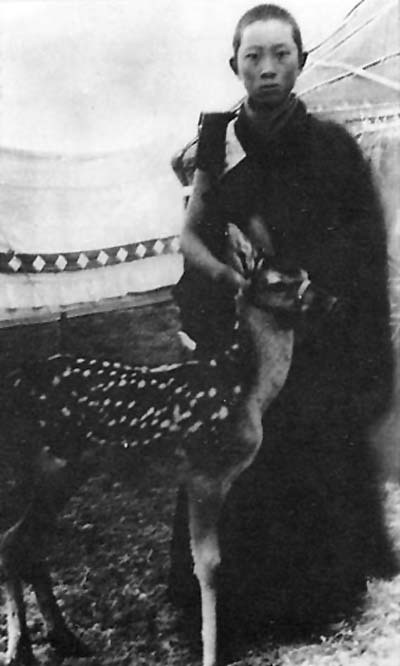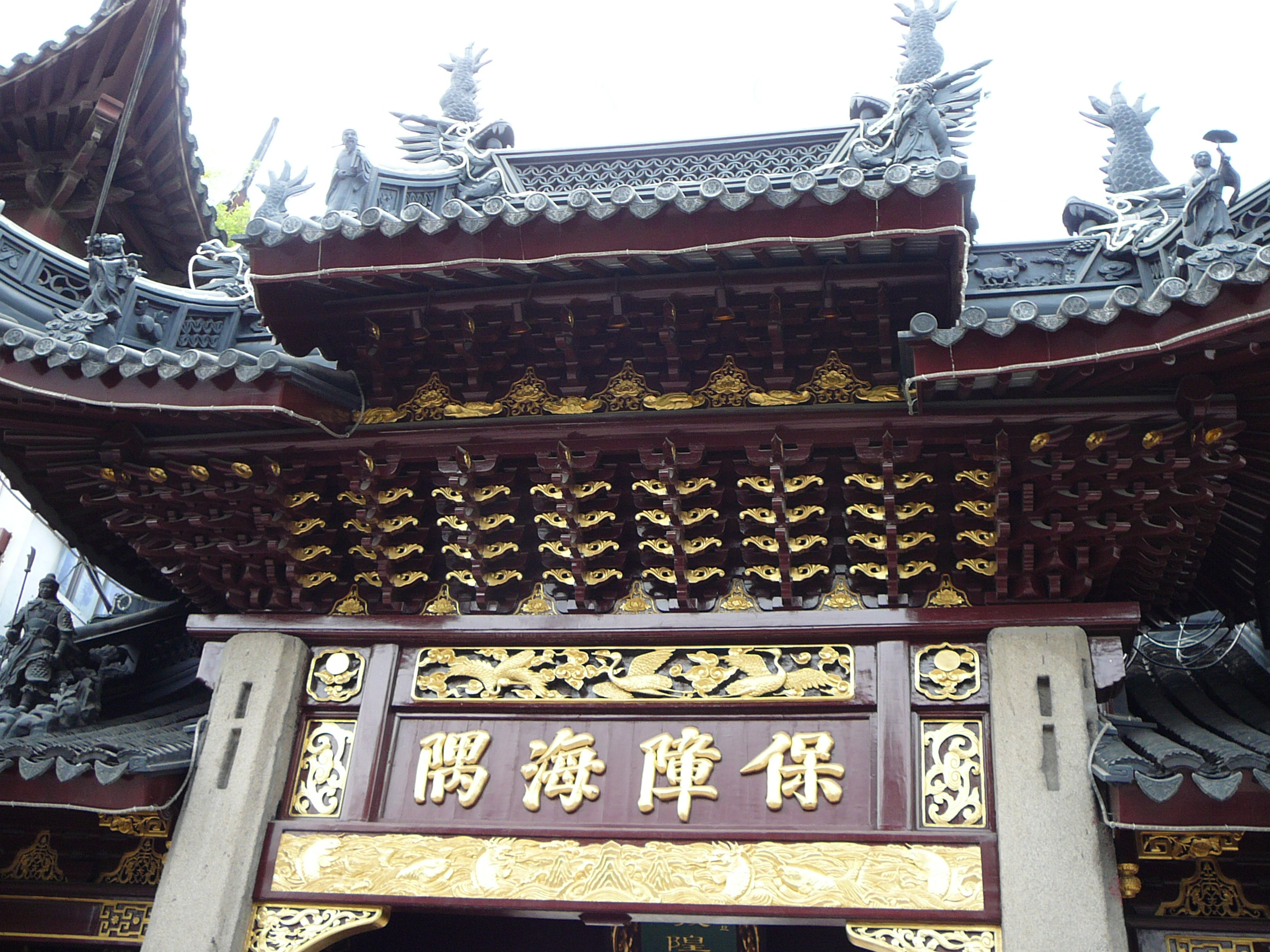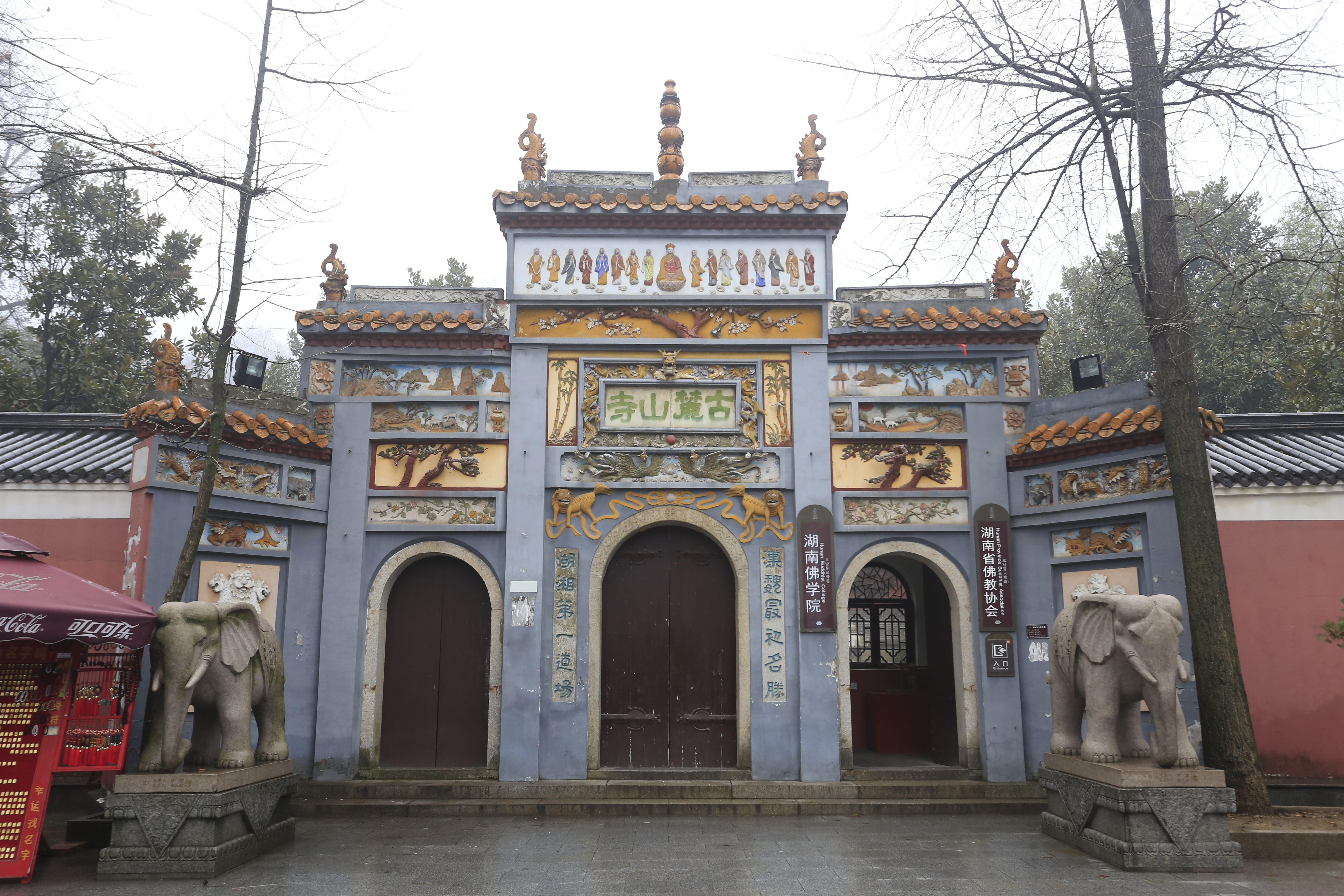|
Xihuang Temple
Xihuang Temple () is a Buddhist temple located in Chaoyang District, Beijing. History Qing dynasty In 1644, Shunzhi Emperor established the Qing dynasty (1644–1911) in Beijing. In order to deal with military and political affairs, he invited the 5th Dalai Lama to Beijing in 1651. Shunzhi Emperor issued the decree building the temple as the residence for the 5th Dalai Lama. In 1780, after the Parinirvana of the 6th Panchen Lama, Qianlong Emperor ordered to built a white pagoda to commemorate him. The construction completed in 1982, Qianlong Emperor named it "Qingjing Huacheng Pagoda" (). Xihuang Temple was devastated by the combined armies of the English and French during the Second Opium War in 1860. Forty years later in 1900, the Eight-Nation Alliance ransacked Xihuang Temple during the Invasion of Beijing. In 1908, the 13th Dalai Lama lived here for almost three months. Republic of China In 1923, the 9th Panchen Lama came to Beijing and lived in Xihuang Temple. Pe ... [...More Info...] [...Related Items...] OR: [Wikipedia] [Google] [Baidu] |
Buddhism
Buddhism ( , ), also known as Buddha Dharma and Dharmavinaya (), is an Indian religion or philosophical tradition based on teachings attributed to the Buddha. It originated in northern India as a -movement in the 5th century BCE, and gradually spread throughout much of Asia via the Silk Road. It is the world's fourth-largest religion, with over 520 million followers (Buddhists) who comprise seven percent of the global population. The Buddha taught the Middle Way, a path of spiritual development that avoids both extreme asceticism and hedonism. It aims at liberation from clinging and craving to things which are impermanent (), incapable of satisfying ('), and without a lasting essence (), ending the cycle of death and rebirth (). A summary of this path is expressed in the Noble Eightfold Path, a training of the mind with observance of Buddhist ethics and meditation. Other widely observed practices include: monasticism; "taking refuge" in the Buddha, the , and the ... [...More Info...] [...Related Items...] OR: [Wikipedia] [Google] [Baidu] |
Choekyi Gyaltsen, 10th Panchen Lama
Lobsang Trinley Lhündrub Chökyi Gyaltsen (born Gönbo Cêdän; 19 February 1938 – 28 January 1989) was the tenth Panchen Lama, officially the 10th Panchen Erdeni (), of the Gelug school of Tibetan Buddhism. According to Tibetan Buddhism, Panchen Lamas are living emanations of the buddha Amitabha. He was often referred to simply as Choekyi Gyaltsen. Recognition The Paṇchen Lama incarnation line began in the seventeenth century after the 5th Dalai Lama gave Chokyi Gyeltsen the title, and declared him to be an emanation of Buddha Amitaba. Officially, he became the first Panchen Lama in the lineage, while he had also been the sixteenth abbot of Tashilhunpo Monastery. The 10th Panchen Lama was born as Gonpo Tseten on 19 February 1938, in Bido, today's Xunhua Salar Autonomous County of Qinghai, known as Amdo. His father was also called Gonpo Tseten and his mother was Sonam Drolma. After the Ninth Panchen Lama died in 1937, two simultaneous searches for the tenth Panche ... [...More Info...] [...Related Items...] OR: [Wikipedia] [Google] [Baidu] |
Tourist Attractions In Beijing
Tourism is travel for pleasure or business; also the theory and practice of touring, the business of attracting, accommodating, and entertaining tourists, and the business of operating tours. The World Tourism Organization defines tourism more generally, in terms which go "beyond the common perception of tourism as being limited to holiday activity only", as people "travelling to and staying in places outside their usual environment for not more than one consecutive year for leisure and not less than 24 hours, business and other purposes". Tourism can be domestic (within the traveller's own country) or international, and international tourism has both incoming and outgoing implications on a country's balance of payments. Tourism numbers declined as a result of a strong economic slowdown (the late-2000s recession) between the second half of 2008 and the end of 2009, and in consequence of the outbreak of the 2009 H1N1 influenza virus, but slowly recovered until the COVID- ... [...More Info...] [...Related Items...] OR: [Wikipedia] [Google] [Baidu] |
Buildings And Structures In Beijing
A building, or edifice, is an enclosed structure with a roof and walls standing more or less permanently in one place, such as a house or factory (although there's also portable buildings). Buildings come in a variety of sizes, shapes, and functions, and have been adapted throughout history for a wide number of factors, from building materials available, to weather conditions, land prices, ground conditions, specific uses, prestige, and aesthetic reasons. To better understand the term ''building'' compare the list of nonbuilding structures. Buildings serve several societal needs – primarily as shelter from weather, security, living space, privacy, to store belongings, and to comfortably live and work. A building as a shelter represents a physical division of the human habitat (a place of comfort and safety) and the ''outside'' (a place that at times may be harsh and harmful). Ever since the first cave paintings, buildings have also become objects or canvasses of much artist ... [...More Info...] [...Related Items...] OR: [Wikipedia] [Google] [Baidu] |
Gelug Monasteries And Temples
240px, The 14th Dalai Lama (center), the most influential figure of the contemporary Gelug tradition, at the 2003 Bodhgaya (India). The Gelug (, also Geluk; "virtuous")Kay, David N. (2007). ''Tibetan and Zen Buddhism in Britain: Transplantation, Development and Adaptation,'' p. 39. Routledge. is the newest of the four major schools of Tibetan Buddhism. It was founded by Je Tsongkhapa (1357–1419), a Tibetan philosopher, tantric yogi and lama and further expanded and developed by his disciples (such as Khedrup Je, Gyaltsap Je and Gendün Drubpa). The Gelug school is alternatively known as New Kadam (''bKa’-gdams gsar-pa''), since it sees itself as a continuation of the Kadam tradition of Atisha (c. 11th century). Furthermore, it is also called the Ganden school, after the first monastery established by Tsongkhapa. The Ganden Tripa ("Ganden Throne Holder") is the official head of the school, though its most influential figure is the Dalai Lama ("Ocean Teacher"). Allying ... [...More Info...] [...Related Items...] OR: [Wikipedia] [Google] [Baidu] |
Tibetan Buddhist Temples In Beijing
Tibetan may mean: * of, from, or related to Tibet * Tibetan people, an ethnic group * Tibetan language: ** Classical Tibetan, the classical language used also as a contemporary written standard ** Standard Tibetan, the most widely used spoken dialect ** Tibetan pinyin, a method of writing Standard Tibetan in Latin script ** Tibetan script ** any other of the Tibetic languages Tibetan may additionally refer to: Culture * Old Tibetan, an era of Tibetan history * Tibetan art * Music of Tibet * Tibetan rug * Tibetan culture * Tibetan cuisine Religion * Tibetan Buddhism * Tibetan Muslims Other uses * Tibetan alphabet * Tibetan (Unicode block) * Tibetan name * Tibetan calendar * Tibetan Spaniel, a breed of dog * Tibetan Mastiff, a breed of dog See also * Tibetan Bells (other) * Traditional Tibetan medicine Traditional Tibetan medicine (), also known as Sowa-Rigpa medicine, is a centuries-old traditional medical system that employs a complex approach to diagnosis, incor ... [...More Info...] [...Related Items...] OR: [Wikipedia] [Google] [Baidu] |
Paifang
A ''paifang'', also known as a ''pailou'', is a traditional style of Chinese architectural arch or gateway structure. Evolved from the Indian subcontinent's '' torana'' through the introduction of Buddhism to China, it has developed many styles and has been introduced to other East Asian countries, such as Korea, Japan, and Vietnam. Etymology The word ''paifang'' () was originally a collective term for the top two levels of administrative division and subdivisions of ancient Chinese cities. The largest division within a city in ancient China was a ''fang'' (), equivalent to a current day ward. Each ''fang'' was enclosed by walls or fences, and the gates of these enclosures were shut and guarded every night. Each ''fang'' was further divided into several ''pai'' (), which is equivalent to a current day (unincorporated) community. Each ''pai'', in turn, contained an area including several hutongs (alleyways). This system of urban administrative division and subdivision reached ... [...More Info...] [...Related Items...] OR: [Wikipedia] [Google] [Baidu] |
Mahavira Hall
A Mahavira Hall, usually simply known as a Main Hall, is the main hall or building in a traditional Chinese Buddhist temple, enshrining representations of Gautama Buddha and various other buddhas and bodhisattvas. It is encountered throughout East Asia. Names From their importance and use, they are often simply known in English as the temples' "Main" or "Great Halls". The term "Mahavira Hall", also encountered as "Mahāvīra Hall" or "Hall of the Mahāvīra", is a reverse translation, employing the original Sanskrit term in place of its Chinese or English equivalent. They are also known as the Precious Hall of the Great Hero, the Hall of Great Strength, or the Daxiongbao Hall. Less often, a main hall is called an " adytum", after the equivalent area in Greco-Roman temples. It is also sometimes misunderstood as the "Great, Powerful, and Precious Palace".. Description Mahavira Hall is the main hall of a Buddhist temple. It is generally located in the north of the Heavenly Kin ... [...More Info...] [...Related Items...] OR: [Wikipedia] [Google] [Baidu] |
Hall Of Four Heavenly Kings
The Hall of Four Heavenly Kings or Four Heavenly Kings Hall (), referred to as Hall of Heavenly Kings, is the first important hall inside a shanmen (mount gate) in Chinese Buddhist temples and is named due to the Four Heavenly Kings statues enshrined in the hall. Maitreya Buddha is enshrined in the Hall of Heavenly King and at the back of his statue is a statue of Skanda Bodhisattva facing the northern Mahavira Hall. In Buddhism, the Maitreya Buddha, also the future Buddha is Sakyamuni's successor. In the history of Chinese Buddhism, Maitreya Buddha has the handsome image in which he wears a coronet on his head and yingluo () on his body and his hands pose in mudras. According to ' (; ''Sung kao-seng chuan''), in the Later Liang Dynasty (907-923), there was a fat and big-stomached monk named "Qici" () in Fenghua of Mingzhou (now Zhejiang). Carrying a sack on his shoulder, he always begged in the markets and streets, laughing. So local people called him "The Sack Monk" (). ... [...More Info...] [...Related Items...] OR: [Wikipedia] [Google] [Baidu] |
Shanmen
The Shanmen (), also known as the Gate of Three Liberations, is the most important gate of a Chinese Chan Buddhist temple. Etymology The origins of the name "sanmen" are debated. One theory is that "''Shanmen''" takes its literal meaning of "Mountain Gate", because temples were traditionally built in forested mountain areas where Chan monks could seclude away from secular life. Another suggests that during various episodes of suppression of Buddhism in Chinese history, monks moved their monasteries deep into the mountains, and later built gates at the foot of the mountain to guide pilgrims to the temples. A further theory is that "Shanmen" is a corruption of "Sanmen", or "Three Gates", referring to the "three gateways" to liberations.() in the Dharma - the "Kongmen" (; emptiness liberation), "wuxiangmen" (; no-aspects liberation) and "wuyuanmen" (; desireless liberation). The latter view correlates with the traditional structure of Chan temples which included three gateways, s ... [...More Info...] [...Related Items...] OR: [Wikipedia] [Google] [Baidu] |
List Of Major National Historical And Cultural Sites In Beijing ...
This list is of Major Sites Protected for their Historical and Cultural Value at the National Level in the Municipality of Beijing. As well as sites protected at the national level there are 326 sites in Beijing that are under municipal protection (see zh or de). See also * Principles for the Conservation of Heritage Sites in China References External links *�Cultural Heritage Units under Municipal Protection in Beijing {{DEFAULTSORT:Major National Historical and Cultural Sites in Beijing 01 Beijing-related lists Beijing } Beijing ( ; ; ), alternatively romanized as Peking ( ), is the capital of the People's Republic of China. It is the center of power and development of the country. Beijing is the world's most populous national capital city, with over 21 ... [...More Info...] [...Related Items...] OR: [Wikipedia] [Google] [Baidu] |
State Council Of The People's Republic Of China
The State Council, constitutionally synonymous with the Central People's Government since 1954 (particularly in relation to local governments), is the chief administrative authority of the People's Republic of China. It is chaired by the premier and includes each cabinet-level executive department's executive chief. Currently, the council has 35 members: the premier, one executive vice premier, three other vice premiers, five state councilors (of whom three are also ministers and one is also the secretary-general), and 26 in charge of the Council's constituent departments. The State Council directly oversees provincial-level People's Governments, and in practice maintains membership with the top levels of the CCP. Aside from very few non-CCP ministers, members of the State Council are also members of the CCP's Central Committee. Organization The State Council meets every six months. Between meetings it is guided by a (Executive Meeting) that meets weekly. The standin ... [...More Info...] [...Related Items...] OR: [Wikipedia] [Google] [Baidu] |






.jpg)